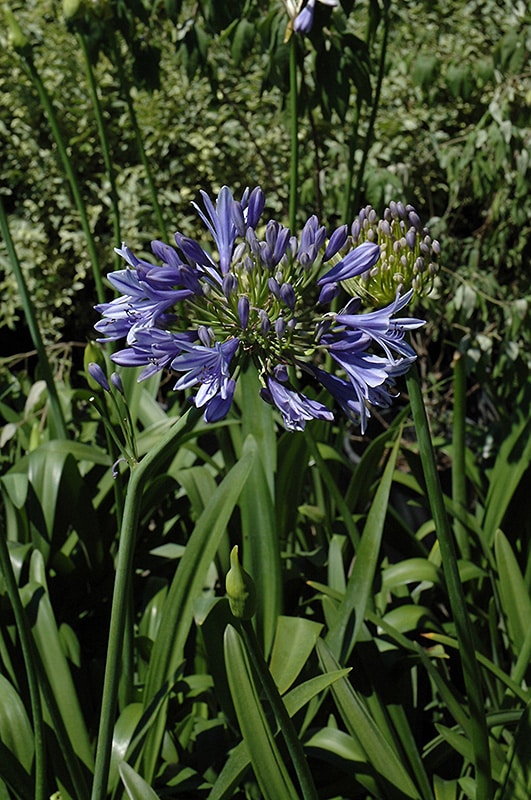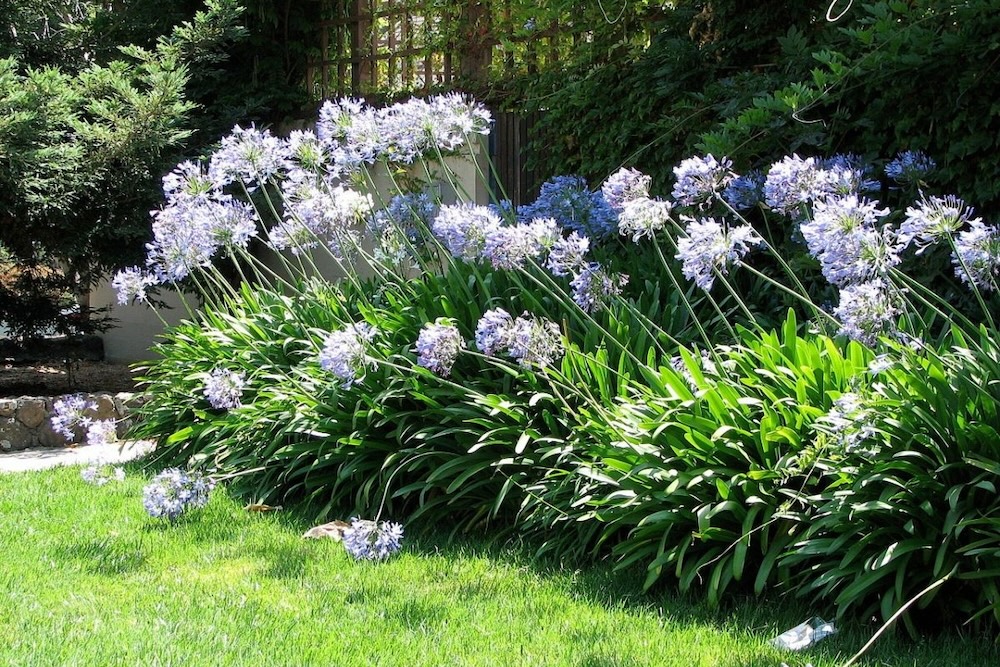Seasonal Agapanthus Care: Planning For Winter Season and Summer
Seasonal Agapanthus Care: Planning For Winter Season and Summer
Blog Article
Unleashing the Secret to Successful Agapanthus Cultivation: Advice for a Flourishing Garden
In the realm of gardening, cultivating agapanthus effectively requires a calculated method that encompasses different elements of plant care. With careful focus to detail, one can unlock the keys to nurturing these spectacular flowers, bring about a yard that flourishes with elegance and vibrancy. By understanding the nuances of agapanthus growing, one can develop an environment where these plants prosper and grow abundantly. In the adhering to discussion, we will certainly check out essential ideas and tricks that will assist you towards a growing agapanthus yard, using insights right into best practices, dirt problems, sprinkling methods, and a lot more.
Planting Agapanthus: Finest Practices
When planting Agapanthus, correct dirt prep work is crucial for making certain effective growth and growth of these gorgeous flowers. Agapanthus, frequently called Lily of the Nile or African lily, flourishes in well-draining soil with a somewhat acidic to neutral pH level - Agapanthus. Before growing, it is important to change heavy clay dirts with natural matter such as garden compost or peat moss to boost drainage and give vital nutrients for the plants
To grow Agapanthus, pick an area that receives full sunlight to partial color, as this will promote healthy development and abundant blooming. Dig an opening twice the diameter of the plant's root ball and put the Agapanthus at the exact same deepness it was previously expanding. Carefully backfill the hole with dirt, pushing down firmly to get rid of any air pockets around the origins.
Water the newly grown Agapanthus completely and remain to maintain the dirt uniformly moist, particularly throughout the plant's energetic growing period. Agapanthus. Using a well balanced fertilizer once a month can additionally sustain the plant's growth and flowering. By following these ideal methods for planting Agapanthus, you can produce a magnificent display screen of these captivating blossoms in your yard
Suitable Dirt Conditions for Agapanthus
For optimal growth and blooming success of Agapanthus plants, making certain the dirt conditions are ideal is essential. Agapanthus grows in well-draining dirt with a somewhat acidic to neutral pH degree varying from 6.0 to 7.0. This sort of dirt enables adequate water drain, preventing waterlogging which can cause root rot. To improve dirt drainage, take into consideration adding organic issue such as compost or peat moss when preparing the growing website. Furthermore, Agapanthus chooses soil that is rich in nutrients, so integrating a well balanced fertilizer throughout the growing period can advertise healthy and balanced development and vivid blooms.

Watering and Feeding Tips
To make certain healthy and balanced development and vibrant blooms, appropriate watering and fertilizing strategies are crucial for successful Agapanthus farming. Agapanthus plants profit from routine watering, specifically during the growing period.
When it comes to feeding Agapanthus, a balanced plant food with equivalent components nitrogen, phosphorus, and potassium can be applied in the springtime to promote healthy and balanced growth and blooming. Slow-release plant foods are ideal for supplying nutrients progressively over a prolonged duration. Avoid over-fertilizing, as this can cause excessive foliage development at the cost of blooms.
Furthermore, including organic matter like compost into the dirt can enhance nutrient degrees and boost dirt framework, helping in the total health and wellness of the Agapanthus plants. By complying with these watering and fertilizing my response tips, garden enthusiasts can guarantee their Agapanthus plants flourish and create stunning screens of flowers.
Trimming and Deadheading Strategies
Proper trimming and deadheading methods play an essential duty in keeping the health and looks of Agapanthus plants, complementing the essential methods of watering and fertilizing for successful farming. Pruning Agapanthus entails removing spent flower heads, dead or yellowing leaves, and overall shaping of the plant to promote much better growth. Deadheading, the procedure of eliminating discolored flowers, not just improves the plant's look but also urges more flowering.
When deadheading Agapanthus, it is a good idea to snip off the blossom stem at the base utilizing sharp, tidy shears. This process redirects the plant's power from seed manufacturing back right into root and vegetation growth, promoting a healthier and a lot more robust plant. Regular deadheading can expand the blooming duration of Agapanthus and prevent self-seeding, which can cause overcrowding.
In regards to trimming, Agapanthus generally benefits from a light trim after flowering to tidy up the plant and encourage fresh growth. Cutting down the spent blossom stems and getting rid of any damaged or dead foliage aids keep the plant's vigor and overall look. However, it is necessary to prevent cutting right into the crown of the plant, as this can damage its health.

Protecting Agapanthus From Vermins and Diseases
Executing effective insect and illness monitoring strategies is crucial to guarding the wellness and vitality of Agapanthus plants in growing. Agapanthus are typically durable plants, however they can still come down with various pests and diseases if not properly cared for. One typical insect that affects Agapanthus is the Agapanthus borer, a caterpillar that tunnels right into the plant, causing damage to the blossoms and leaves. To stop invasions, regular evaluation of the plants is investigate this site essential. If borers are spotted, they can be by hand removed, or insecticidal soap can be used as a control procedure.
In addition to parasites, Agapanthus are susceptible to diseases such as root rot and fungal fallen leave areas. These issues can typically be protected against by making sure appropriate water drainage and avoiding overwatering. Impacted components of the plant must be without delay removed to protect against further spread if indications of disease show up. Fungicides may additionally be utilized as a therapy procedure, following the supplier's directions carefully. By staying cautious and resolving bug and condition problems quickly, gardeners can help their Agapanthus flourish and flourish.

Conclusion
In verdict, effective growing of agapanthus calls for proper planting techniques, excellent soil problems, appropriate watering and fertilizing, routine trimming and deadheading, and defense from illness and pests. By complying with these pointers and tricks, garden enthusiasts can make sure a prospering garden full of attractive agapanthus blooms. Agapanthus. Keep in mind to preserve consistent care and interest to information to advertise the wellness and long life of these stunning plants
When planting Agapanthus, appropriate dirt preparation is necessary for ensuring effective development and growth of these beautiful blossoms.Water the freshly grown Agapanthus extensively and proceed to keep the dirt uniformly damp, particularly throughout the plant's active growing season.For optimum development and growing success of Agapanthus plants, guaranteeing the dirt conditions are optimal is important. When hair transplanting or growing Agapanthus, make sure the soil is well-prepared to offer the required structure for the plants to establish themselves effectively. One common pest that influences Agapanthus is the Agapanthus borer, a caterpillar that passages into the plant, creating damages to visit homepage the blossoms and fallen leaves.
Report this page